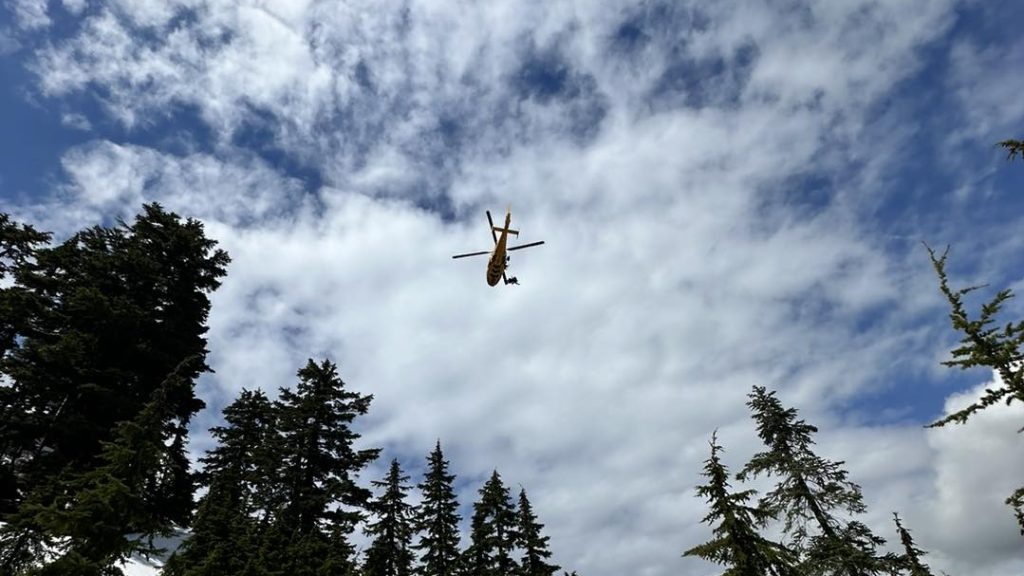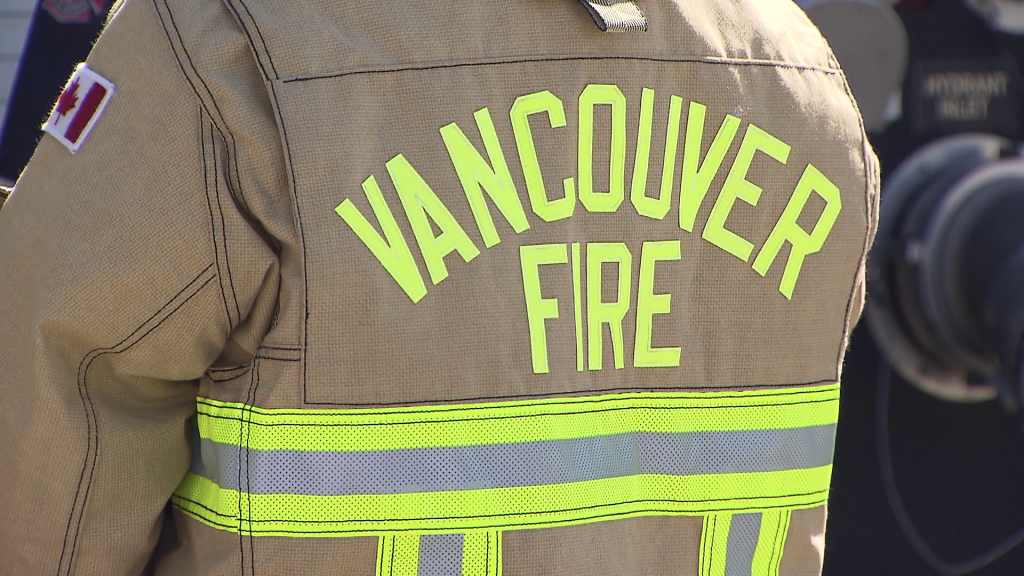Booties for buses as TransLink tests new tools for winter weather
Posted November 2, 2017 1:47 pm.
Last Updated November 2, 2017 4:40 pm.
This article is more than 5 years old.
VANCOUVER (NEWS 1130) – Metro Vancouver buses and the SkyTrain are getting new tools to combat ice and snow this winter, as TransLink tries to prevent a repeat of last year’s plague of delays and cancellations due to the weather.
The transit authority is testing out tire socks on several of its buses that drive up Burnaby Mountain between Production Way and Simon Fraser University
“It’s basically a blanket that gets installed over the tire and it’s made up of Kevlar threads,” Coast Mountain Bus Company engineer Simon Agnew said. “With the weight of the bus pushing down on them, they basically increase the contact surface area between the blanket and the snow or ice that you’re running on.”
A pair of socks costs $200 and will be placed on the outside rear tires of the bus.
The socks may be expanded to other routes if they prove successful, Agnew said, adding they can be worn all day and are easier to install and provide and smoother ride than chains.
TransLink will be the first North American transit service to try out the socks, which are already used on buses in Norway.
Metro Vancouver buses use snow and ice approved all-weather tires, as opposed to installing winter tires.
De-icing glycol will return to coat overhead bus power lines.
Bus
- Tire sock trial – If snowy weather limits access to Burnaby Mountain, we will test “tire socks” on buses operating between Production Way – University Station and SFU. This technology has worked well in other jurisdictions.
- Trolley bus wires anti-icing trucks – These trucks spray anti-icing agent to the entire 300-km electric trolley overhead system if there is risk of frost or ice.
- Additional bus tire traction – Operators have a snow/ice switch which gives the bus tires better traction in snow.
- Bus switch outs – If needed, we switch out articulated buses for traditional buses. Articulated buses are great for carrying large numbers of passengers, but 40-foot conventional buses have better traction on hills in snow.
- Snow routes – Work with municipalities to coordinate our service with priority corridors for snow clearing, should conditions become severe.
Sections of SkyTrain power rails will be outfitted with heat tracing, which is a wire that will warm up the surface of the track and prevent ice buildup.
“Ideally we turn them on, it keeps the top of the rail warm and ice won’t form and we don’t have that ice buildup that affected us so badly last year,” SkyTrain vice president of operations Mike Richard said.
The heat tracing will be in addition to the glycol used on the Expo and Millennium lines and Kilfrost on the Canada line. Cover-boards are also being installed, to protect the power rail from snow build-up.
Rather than asking cities to plough certain routes, like in previous years, Donald Palmer with Coast Mountain said the company is working closer with municipalities.
“We started meeting with the municipalities and we’re taking their priority routings and we’re overlaying them with our service map and we’re finding some key corridors that will be able to get people moving to get them as close to a SkyTrain station as possible,” he said.
SkyTrain
- Canada Line heat tracing and cover-boards – Heat tracing is being installed on the power rail in sections where heavy ice buildup led to service disruptions in February 2017. Cover-boards are also being installed, to protect the power rail from snow buildup. Both will reduce risk of ice.
- SkyTrain de-icing – De-icer spray trains are used to keep the power rail free of ice. De-icing stations are set up in covered areas and tunnels to prevent ice and snow compacts on the trains. During times of overnight snow, some SkyTrain cars will run throughout the night to keep tracks clear.
- Canada Line anti-icing and sanding — ensures the power rail and tracks are clear of ice. Canada Line cars have a braking system similar to ABS brakes on your vehicle which helps avoid slippage.
- Extra staff on transit — Extra staff including SkyTrain Attendants and Transit Police will assist customers in getting where they need to go.
- Address problem trees/branches — An arborist is reviewing all trees and branches within 10 metres of the SkyTrain tracks. In partnership with CP, the same work is occurring for West Coast Express tracks.
Meanwhile, the SkyTrain is being fitted with heat-tracing technology to melt ice in areas where it built up in February causing delays. Cover boards are also being installed to protect the power rail from snow build-up.
As for HandyDART service, TransLink says staff are reaching out to customers with so-called problem driveways or access to see if there is a clearing plan. And extra staffing will be implemented to help people with both loading and unloading.
Funding for the new tools will come from TransLink’s existing budget.
Related Articles
Good chance we could see another brutal winter on the Lower Mainland
Snowfall warning for Sea to Sky region
As always, NEWS 1130 will have you covered if and when the snow hits. We’ll have full coverage both on-air and online with school closures and NEWS 1130 Traffic will get you where you need to go up with updates every 10 minutes on the ones.










